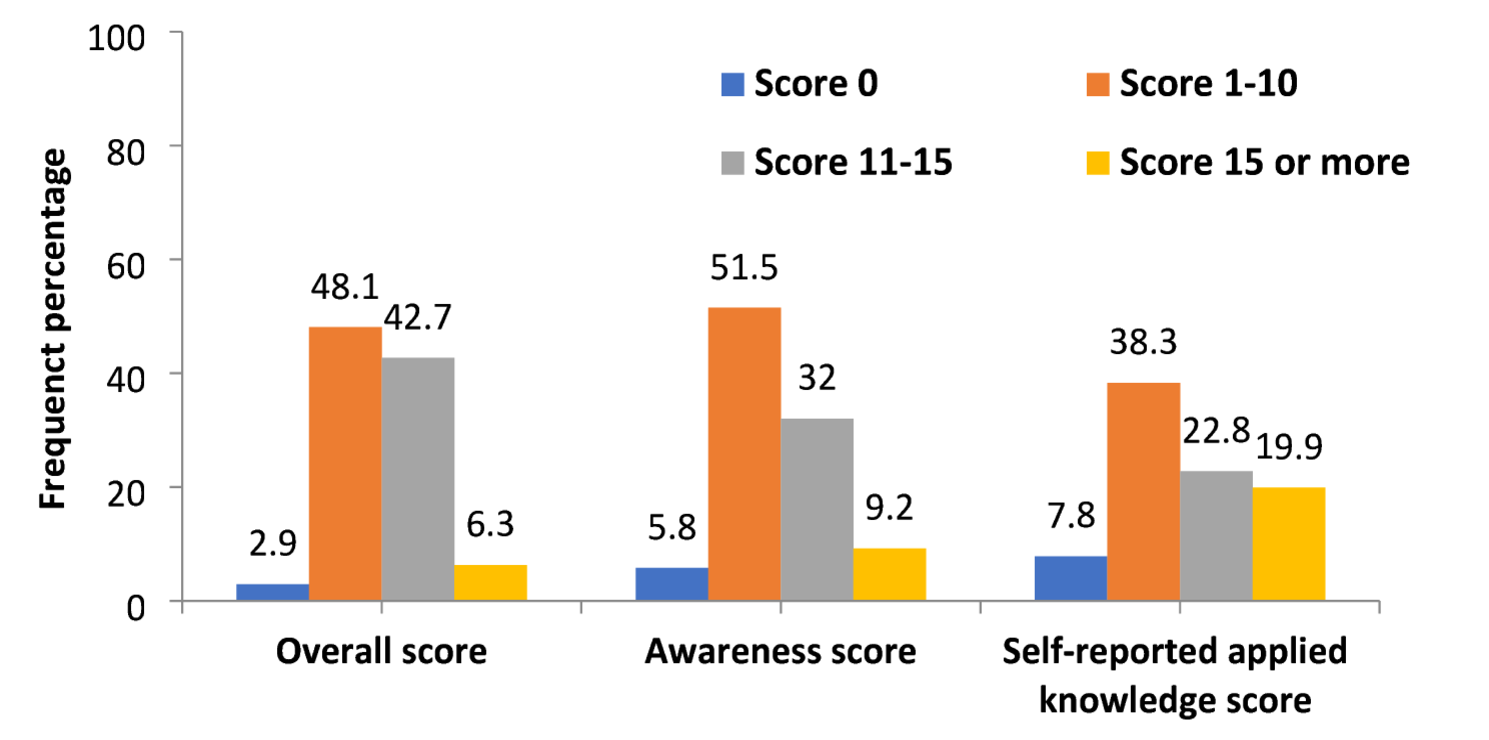Methodological considerations
While this study aimed to assess both awareness and practical competencies among physical education graduates, it is important to clarify that performance scores reflect self-reported applied knowledge, not real-time emergency behavior. The questionnaire captured perceived preparedness in dental trauma scenarios but did not verify hands-on proficiency. High scores may signal confidence rather than actual competence (Appendix 4). To enhance ecological validity, future studies should employ scenario-based assessments or simulation exercises.
Moreover, multiple subgroup comparisons were conducted across demographic and experiential variables. Though this allowed for richer analysis, it increased the risk of Type I error. Because the study was exploratory, no statistical corrections (e.g., Bonferroni adjustment) were applied. Therefore, significant findings should be interpreted with caution and validated through confirmatory research with corrected thresholds.
Knowledge, exposure, and athletic context
Contrary to expectations, the study found no significant link between years of sports activity and knowledge or performance scores. This outcome aligns with prior findings from Mohandas and Chandan, and Rouhani et al. [8, 28], who reported no correlation between sports activity history and dental trauma knowledge. Conversely, Sepet et al. [29] observed higher knowledge among participants with work experience exceeding five years, particularly involving mouthguard use. Vliet et al. [30] also noted better trauma knowledge among Dutch hockey coaches with more than a decade of experience.
Study by Moeini et al. [31] further supports the relationship between experience and knowledge in contact sports like rugby, kabaddi, and hockey. These findings suggest that high-contact sports increase trauma exposure and foster improved performance, whereas this connection fades in less physically intense activities.
Participants involved in martial arts scored significantly higher than those engaged in ball sports or other disciplines. This is consistent with the findings of Vliet et al. [30, 32] who found that field hockey coaches were better informed than water polo coaches. However, Elareibi et al. [33] reported minimal differences in awareness among coaches from taekwondo, water polo, and basketball, indicating that sport type may not always predict trauma preparedness.
The study also found that repeated dental trauma exposure significantly boosted awareness and performance scores. Participants with three or more incidents demonstrated markedly higher scores than those with one or none. While Trabelsi et al. [9] documented trauma exposure rates ranging from 9 to 44% across physical education teachers, they did not establish a consistent link with performance. However, Panahi et al. [34] reported a direct correlation between trauma exposure and awareness regarding avulsion events, supporting the idea that experience enhances understanding—often through peer dialogue and independent learning.
School physical education instructors
Although no significant difference emerged between school sports instructors and other graduates, the knowledge and performance of school physical education teachers is critical due to the vulnerability of adolescents. Ages 8 to 15 are marked by high participation in contact sports and increased sensitivity toward appearance and identity formation.
Salehi et al. [16] reported that 44% of dental trauma cases occur in children aged 8–10. Esmaeil Pour et al. [35] emphasized that less experienced athletes are more prone to dental injuries. Rouhani et al. [8] observed that athletes had lower awareness than coaches, particularly within this young age group. These results highlight the need for increased trauma management capacity among school-based instructors, as they serve as the primary responders in youth athletic environments.
Impact of training and educational formats
Graduates who received prior training in dental trauma management demonstrated significantly better performance, and those with knowledge of tooth replantation scored higher in both dimensions. This emphasizes the role of targeted education—whether delivered via pamphlets, seminars, case presentations, or videos.
While Vliet et al. [30] found that instructors preferred written materials, they also emphasized that interactive formats such as peer discussions and case presentations resulted in stronger retention. Al-Asfour et al. [36] echoed this by highlighting the efficacy of Q&A sessions, visual tools, and dynamic engagement during seminars, suggesting that combining visual and interactive techniques is critical for lasting improvement.
Advancing health literacy and global frameworks
In addition to knowledge and performance, emerging frameworks in dental public health advocate for understanding oral health literacy as a multidimensional construct encompassing empowerment, access, and contextual application. Tools such as the Health Literacy in Dentistry scale (HeLD-14) and the Oral Health Impact Profile (OHIP-5) offer validated mechanisms to explore how individuals interpret and respond to oral health information [37].
The HeLD-14, validated in diverse populations—including English-speaking adults [37, 38]—assesses domains like communication, support, and access, demonstrating high internal consistency (α = 0.92). Its concurrent validity with OHIP-5 [39,40,41] enhances its utility in evaluating oral health–related quality of life. Integrating such tools into future studies could offer richer insight into readiness and decision-making capacity in emergency dental trauma situations.
Aligned with the World Health Organization’s definition of health promotion [42], this study’s findings underscore the importance of health literacy as a foundation for empowering individuals. Equipping physical education graduates with the ability to evaluate, apply, and disseminate trauma management information can foster a culture of preventive care, peer education, and informed response—especially in high-visibility youth sport contexts.
Implications for curriculum and certification
The observed knowledge gaps suggest a need for curriculum reform. Integrating dental trauma management into coaching syllabi, certification standards, and undergraduate programs may enhance preparedness. National guidelines and scenario-based training modules could strengthen real-world emergency response capacity among physical education professionals.
Limitations
The questionnaire assessed awareness and performance but omitted validated oral health literacy instruments (e.g., HeLD-14, OHIP-5), limiting evaluation of decision-making and empowerment. Despite simplified language, some participants may have faced comprehension barriers. Self-reported data, incomplete follow-ups due to athletic obligations, and a two-week gap between stages may have introduced variability and recall bias. Prior training exposure varied, and the study’s regional scope may limit generalizability.

